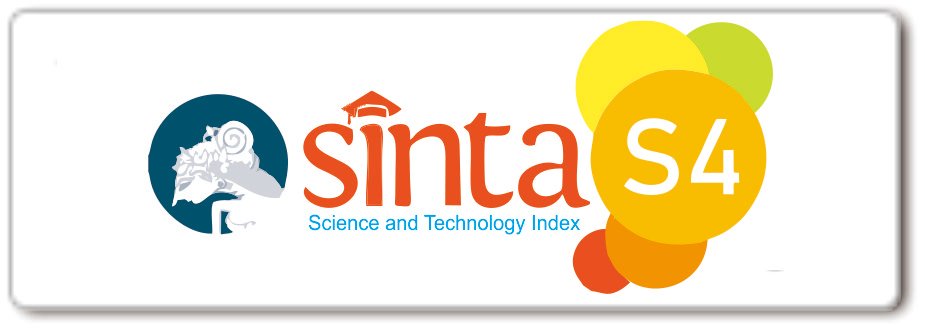Eritroderma yang Disebabkan Cutaneous T-Cell Lymphoma (CTCL)
DOI:
https://doi.org/10.33820/mdvi.v45i4.40Abstract
Eitoderma merupakan peradangan kulit yang mengenai 90% atau lebih permukaan kulit. Limfoma sel
T kulit (cutaneous T-cell lymphoma atau CTCL) merupakan salah satu penyebab eritroderma. Prognosis penyakit
ini buruk, karena rerata pasien hanya mampu bertahan 2 tahun, oleh karena itu diagnosis eritroderma
karena CTCL menjadi sangat penting.
Seorang lelaki usia 65 tahun datang dengan keluhan utama muncul kulit merah dan mengelupas pada
hampir seluruh tubuh sejak 1 bulan sebelum periksa ke rumah sakit. Satu minggu sebelumnya, pasien mengeluh
kulit merah dan mengelupas, terasa gatal, badan terasa panas, rambut rontok, kuku menjadi tebal dan
kekuningan, demam hingga menggigil. Didapatkan limfadenopati di daerah inguinalis dekstra. Status dermatologis
pada hampir seluruh tubuh tampak bercak eritematosa dengan deskuamasi berwarna putih di atasnya,
multipel dan tersebar. Pada pemeriksaan darah rutin didapatkan sel Sezary. Hasil pemeriksaan histopatologis
menunjukkan sebukan band like sel limfosit atipik di dermis. Selain itu didapatkan juga mikroabses Pautrier.
Pengecatan imunohistokimia CD3+ dan CD4+ menunjukkan hasil positif. Lesi membaik dengan terapi injeksi
metilprednisolon intravena 62,5 mg/hari selama 7 hari.
Penyebab eritroderma pada kasus ini adalah CTCL yang ditegakkan dengan anamnesis, pemeriksaan fisis
dan penunjang terutama darah lengkap dan pemeriksaan histopatologis.
Kata kunci: eritroderma, CTCL
Downloads
References
Int J Dermatol.2012; 51:1019-3
2. Assaf C, Sterry W. Cutaneous lymphoma. Dalam: Wolff
K, Goldsmith LA, Katz SI, Gilcherst BA, Paller AS, Leffell
DJ, penyunting. Fitzpatrick’s dermatology in general
medicine. Edisi ke-8. New York: McGraw-Hill Companies;
2008.h.1386.
3. Sikorska M, Sokolowska_Wojdylo M, Kowalczyk A, Roszkiewicz
J. Effectiveness of interferon in mycosis fungiodes
therapy. Post Dermatol Alergol. 2012; 29: 51-5
4. Prince HM. New strategies in the treatment of T-cell lymphoma.
Clin Adv Hematol Oncol. 2008;6:4-10.
5. Kim YH. Cutaneous T-cell lymphoma facts. Canada: Leukemia
and lymphoma Society; 2011.h.1-9.
6. Willerslev-Olsen A, Kresjgaard T, Lindahl LM, Bonefeld
CM, Wasik MA, Koralov SB, dkk. Bacterial toxins fuel
disease progression in cutaneous T-cell lymphoma. Toxins.
2013;5:1403-20.
7. Sapadin AN, Fleischmajer R. Tetracyclines: nonantibiotic
properties and their clinical implications. J Am Acad Dermatol.
2006;54:258-63.
8. Meyer N, Paul C, Misery L. Pruritus in cutaneous T-cell
lymphomas: frequent, often severe and difficult to treat.
Acta Dermatol Venereol. 2010;90:12-7.
9. Rothe MJ, Bernstein ML, Grant-Kels JM. Life-threatening
erythroderma: diagnosing and treating the “red manâ€. Clin
Dermatol.2005;23(2):206-17
10. Sigurdsson VS, Toonstra J,Hezemans-Boer M, van Vloten
WA. Erythroderma. Elsevier 1996;35(1):53-7
11. Willemze R, Jaffe ES, Burg G. WHO-EORTC classification
for cutaneous lymphomas. J Cutan Pathol 2005;32(10):647-
74
12. Agar NS, Wedgeworth E, Crichton S, Tracey JC, Michael
F, Silvia R, dkk. Survival outcomes and prognostic factors
in mycosis fungoides/sezary syndrome: validation of the revised
international society for cutaneous lymphomas/European
organisation for research and treatment of cancer staging
proposal. J Clin Oncol. 2010;28(31):4730-9
13. Wieselthier JS, Koh HK. Sezary syndrome:diagnosis, prognosis,
and critical review of treatment options. J Am Dermatol.
1990;22(3):381-401
14. Yamaguchi T, Ohshima K, Karube K, Tutiya T, Kawano R,
Suefuji H, dkk. Clinicopathological features of cutaneous lesions
of adult T-cell leukaemia/lymphoma. Br J Dermatol.
2005;152(1):76-81
15. Cho-Vega JH, Tschen JA, Duvic M,Vega F. Early-stage
mycosis fungoidesvariants: case-based review. Ann DiagnPathol.
2010;14(5):369-85
16. Gelfand JM, Shin DB, Neimann AL, Wang X, Margolis DJ,
Troxel AB.The risk of lymphoma in patients with psoriasis.
J Invest Dermatol. 2006;126(10):2194-201
17. Ahern K, Gilmore ES. Pruritus in cutaneousT-cell lymphoma:
a review. J Am Acad Dermatol. 2012;67(4):760-8













